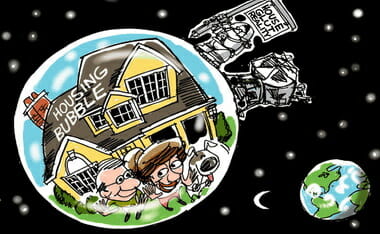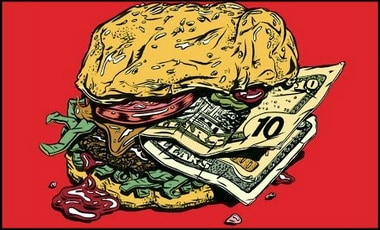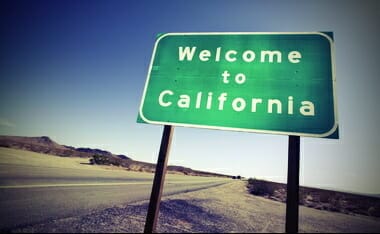…Free-market capitalism isn’t the same thing as radical libertarianism. Stan Veuger, an American Enterprise Institute scholar and economics lecturer at Harvard, dismisses what he calls “the anarcho-capitalist ideal”: an economy with no regulations and zero taxation. “There are places like Somalia that score well” on such purist definitions of free markets, he points out. To work well, capitalism needs “an environment where people can concentrate on being productive,” rather than, say, having private armies to assure personal safety. Free-market capitalism requires laws and rules, more than ever, now that more people live in close proximity in dense cities than ever before. Human activity leads to disputes, and disputes can be solved, or at least moderated, by resolutions that govern behavior. We often forget that markets don’t make broad public-policy decisions; governments do. Markets allocate resources under a particular policy regime, and they can provide feedback on whether policies are working. If a city, say, restricts building height to preserve sunlight in a public park, free-market actors will take the restricted supply into account, raising building prices. This doesn’t mean that the city made the wrong decision; it means that the city’s voters will risk higher housing prices in order to preserve access to sunlight. By contrast, a city that restricts housing supply and restricts prices via rent regulation is thwarting market signals—it takes an action and then suppresses the direct consequences of that action.
[….]
In critical areas of the economy, though, markets are in retreat. Behind the veneer of free-market governance is a deep expanse of government involvement in massive areas of the economy, such as the housing market and health care. People don’t make decisions on housing and health-care concerns every day, but when they do, they would benefit from the information that markets provide about whether they can afford a large house or whether a particular drug is worth the price. Government distortion of these key markets has scrambled these signals.
An annual congressional report, “Estimates of Federal Tax Expenditures,” gives insight into how Washington manipulates supply and demand in these sectors. Consider house prices. This year, Washington will pay homeowners $99 billion in forgone taxes to borrow money to purchase or refinance a house or to sell that house and reap the profit. Americans will buy or sell about $600 billion worth of houses this year. Government subsidy, then, represents nearly one-sixth of this market. The federal government also provides a guarantee for most mortgages, thanks to Fannie Mae and Freddie Mac, the two government-supported mortgage companies that benefited for decades from an implicit government guarantee before they got an explicit guarantee during the 2008 financial crisis.
These subsidies have fired the growth of the housing industry. Between 1975 and 1979, the U.S. Treasury paid out $102.6 billion in mortgage-interest breaks in today’s dollars. Between 2015 and 2019, the Treasury will pay out $419.8 billion in such tax favoritism—a more than fourfold rise, nearly ten times the population increase. The hike is particularly extraordinary, considering that in the late 1970s, the annual interest rate on a mortgage was 9 percent, twice what it is today. Taking today’s lower rates into account, Washington has increased the mortgage subsidy more than eightfold.
It’s no surprise that mortgage debt has soared, to $9.5 trillion, from $2.6 trillion in inflation-adjusted dollars in 1981. Back then, mortgage debt constituted 31 percent of our nation’s GDP. Today, it makes up nearly 53 percent. McCloskey, who thinks that free markets are generally healthy, acknowledges that “there are examples of the price signal not coming through.” The mortgage-interest deduction is “a silly idea,” she says, yet “very hard to change.”
Indeed, government subsidy is a critical factor in whether families can afford to purchase a home, and what kind of home, how large, and in what zip code. The home-mortgage deduction, then, helps determine how people live—yet we barely notice. Few of us consider how the government shapes one of the biggest decisions we’ll ever make, or how the U.S. government’s presence in the housing market maintains the value of our homes.
Housing subsidies that distort individual decisions also affect the biggest investment market in the world: the American housing market is worth $27.5 trillion—more than a tenth of the world’s $250 trillion in total wealth. The government, not capitalism, has determined the value of this market, which, in turn, helps determine the value of other markets: money that goes into this 11 percent of the global asset market can’t go into the other 89 percent. Home values also affect consumer spending. Someone whose home value is rising will feel freer to take on credit-card debt, for example.
Perhaps American house prices should be lower, and people should put their savings into companies that create products and jobs. Or perhaps house prices should be higher, accounting for a growing population, and people should live in smaller homes, spaced more closely together. In turn, perhaps the price of Chinese stocks would be higher, reflecting future growth, if Chinese investors did not divert money into U.S.-backed American housing debt. No one knows, because market signals get obscured.
One can agree or disagree with government jiggering of the housing market. What one cannot do is call it “free-market capitalism.” It is better described as democratic socialism. Americans have embraced government control of one of the world’s most important economic activities.
Free markets are under attack in health care, too, and the trend began long before Obamacare. Critics of our dysfunctional health-care system often blame capitalism for its excesses and distortions. But the health-care “market,” like the housing market, is responding rationally to government signals.
Washington provides massive tax breaks to health care. This year, as noted in Congress’s tax-expenditure report, the government will provide $143.8 billion in federal tax breaks for employers’ coverage of workers’ health insurance—more than the housing-tax break. The health-care subsidy has increased ninefold after inflation since the late 1970s. This tax break means that workers don’t see the full cost of their health-care coverage and thus cannot respond, when the price of health care rises, by demanding lower costs.
In providing Medicare to seniors and Medicaid to poorer people, Washington is the nation’s largest health-care customer, accounting for more than 30 percent of the United States’ annual $3 trillion in health-care spending. The largest customer in any market affects the entire market. Medicare and Medicaid stipulate how much the federal government will pay to hospitals and doctors for visits and surgeries. If hospitals and doctors can’t recover their costs and make an adequate profit under this price schedule, they charge private customers more. Medicare also distorts the price that drugmakers can charge for prescription drugs. Pharmaceutical companies know that their biggest customer is the government of the world’s richest sovereign nation. They have no way of setting market prices.
This past summer saw a health-care episode that, depending on your point of view, might have looked like an example of successful free-market capitalism or uncontrolled capitalist greed. Drugmaker Mylan said that it would increase the price of a decades-old product, the EpiPen allergy shot, to $600. That was the latest in a string of price hikes that have made the EpiPen 400 percent more expensive than when Mylan purchased the product a decade ago. Mylan has quintupled EpiPen’s revenues during that period, Bloomberg News reported, partly through savvy marketing. At one time, doctors prescribed EpiPens only to people with histories of severe allergic reaction. Now, people with more moderate allergies ask their doctors for EpiPens as a preventive measure.
The would-be free-market defense is that Mylan is making a decent profit, giving some people what they need (a lifesaving drug and medical device) and giving others what they want (a sense of security). Under this argument, Mylan can take that profit and invest it in new drug development. The would-be free-market criticism is that Mylan is enriching its executives by taking advantage of people who have no choice but to buy this product.
The reality: Mylan doesn’t operate in a free market, so one can neither praise nor blame markets for the EpiPen price. Mylan could increase prices and sales over a decade because its “customers” weren’t directly paying—most people buy their EpiPen through subsidized private insurance or through Medicare or Medicaid. Mylan could also boost EpiPen sales by petitioning the government for special benefits. Through lobbying, as Bloomberg notes, the company pushed 47 states to stock the pens in schools. And when federal regulations decreed that people should carry EpiPens in packs of two, the company stopped selling single EpiPens.
Lastly, Mylan lacks a competitor. If Mylan were operating in a competitive market, it could not have imposed these price increases, regardless of whether it wanted to invest the profits in new drug research or line its executives’ pockets. If Penguin Books tried to charge $300 for a copy of A Tale of Two Cities, another bookseller would price the tome at $8, and that would be the end of that.
Just as political forces helped shape Mylan’s pricing, politics, not markets, made the company retreat from its latest price increase. Democratic presidential nominee Hillary Clinton singled out the drugmaker as “the latest troubling example of a company taking advantage of its consumers.” But Mylan wasn’t exploiting consumers; it was only responding to perverse government signals.
Just as in housing, one can agree or disagree with the U.S. government’s policies in health care. One can argue that the government should pay high prices for drugs to signal to global investors that they can expect big payoffs for taking risks. Or, one can maintain that the government should use its negotiating power to lower prices, as European nations do. One cannot claim that either policy is a free-market one; both are social-democratic positions.
The government’s hand is increasingly busy in other areas of society, too, preventing market signals from coming through. In life’s decisions, getting an education is right up there with buying a house or choosing the right cancer medicine. Yet prospective students don’t determine the free-market value of a particular school’s curriculum through the amount that they are able and willing to pay. Instead, the government distorts this market. Washington provides $2.1 billion a year in tax subsidies for student loans. Just as important, it keeps the interest rates on these loans low by directly lending money to students. This cheap money has inflated the cost of education by giving students more borrowed money with which to pay and by removing any incentive for schools to control expenses. Over the past decade alone, the amount of debt that students owe has more than doubled after inflation, from less than $600 billion in 2005 to $1.4 trillion in mid-2016.
Just as in health care, America saw a striking example of how government, not the market, governs education over the summer. Just before the start of the fall term, ITT, a for-profit college with 35,000 students, said that it was going out of business. It wasn’t for a lack of customers; rather, it was for a lack of federal money backing those customers. Washington had demanded that the company pay much more to participate in the federal student-loan program, to account for, as the government put it, “significant concerns” about ITT’s “integrity, financial viability, and ability to serve students.” The college couldn’t pay, and it shuttered its classrooms. When a school cannot stay open without ceaseless infusions of government-guaranteed tuition payments, it is not operating in a free-market environment (and neither are its for-profit and nonprofit competitors). Just as with housing and health care, one can agree or disagree with government control of the higher-education market. One just can’t call it a free market….
(read the WHOLE article… it is worth it)




